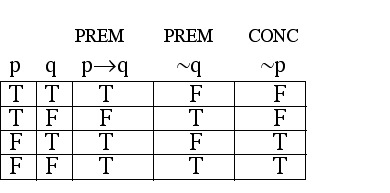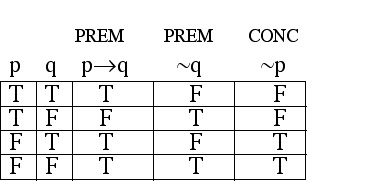EXAMPLE 2.3.2 Solution
Step 1: Symbolize the argument.
Let p be the statement "I have a hammer."
Let q be the statement "I hammer in the morning."
Then the argument has this form:

Step 2: Make a truth table having a column for each premise and for the conclusion.

Step 3: Look for the indication of an INVALID argument (a row where every premise is true while the conclusion is false).

Notice that there is no row where the conclusion column is false while both premise columns are true; the absence of a "bad row" tells us that the argument is VALID.